Introduction to Graphic Designing
The History and Definition of Graphic Designing, Roles, Skills and Tools of a Graphic Designer
Table of contents
No headings in the article.
By Gloryah Antony
You must be a lover of arts, some sort of designer looking to get your products a better look or you simply are an explorer of knowledge, seeking a new adventure and decided: let me seek out graphic designing today. Truth be told I don’t know why you decided to click onto this link and it led you to my article. Now that you’re here, at the edge of an immense jungle, eagerly waiting to disentangle some exciting adventure, I most certainly hope to be a good guide.
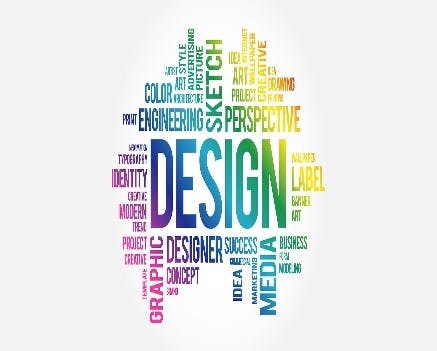 What is there to learn about graphic designing as someone with either no idea or as someone with some pre-existing knowledge? Honestly, there is a lot in this field. First things first though, the foundations, baby steps child, Rome was never built in a day.
What is there to learn about graphic designing as someone with either no idea or as someone with some pre-existing knowledge? Honestly, there is a lot in this field. First things first though, the foundations, baby steps child, Rome was never built in a day.
History of Graphic Design
Graphic designing, just like any other field has its own history. If we’d go way back to where it began, we’d start with the Lascaux Caves, Southern France. Surprised? Light bulb is shining over your head? As a craft, it would encompass the whole History of Art. It can be traced way back to 15000BC when the first visual communication arose.
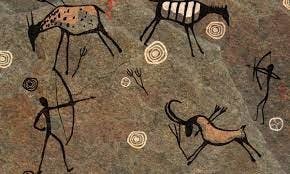
First forwarding, several thousand years later, we will make a stop to discover Blau Monument, the first artefact to use both words and Pictures. Afterwards, we will discover in Pharaoh’s Land, there were hieroglyphics. This should tell you that, this craft has been there as people throughout the ages had a need to communicate visually by the use of graphics on a surface. Whether it was in a cave or some fancy pot in a home, visual communication has been there throughout the ages.
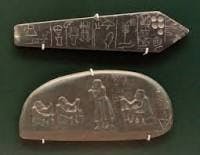
Let’s come closer to our times, around 105AD-1530AD, paper was invented in China hence leading to the concept of printing. Later on, the moveable type was invented in 1045, which allowed characters to be placed individually for printing. Trickling down in history, in Fabriano Italy, 1276, a paper mill arrived hence officially bringing printing to Europe. Two hundred years later in 1450, the system for printing books was considered to have been perfect. Therefore this lead to the first illustrations in a book in 1460. We, later on, see Claude Garamond, opening the first type of foundry, in 1530. He’d create and sell fonts to printers.

When Industrial Revolution happened, from 1760 to 1800, it ushered a new era for this craft. Whereby, there were plenty of innovative technologies such as Lithography. 1800, the printing press was received. Whereby this machine reduced labour by 90% and increased the size of paper that could be printed. This revolution caused a wave in business practises whereby graphic designing eased its way in 1900 and by 1901 it exploded. The growth of advertising and printing industries created a demand for business to create their logos to help in branding their company. What this did for the given companies of that given time, is that companies became more than just a brand, a name. a striking and memorable piece of art, with colour, shape and composition of all sorts, working together to make an impression on consumers.

Piecing all this together, we get to understand that graphic designing, is a craft that has become a key tool in advertising. From making beautiful designs on everything from posters to t-shirts, record covers and more. With the inventions of computers in the 1900s, designers would go ahead to create digital tools. This led to the creation of Photoshop in 1990 which would in turn facilitate the making of images. With such digital tools, the field was further revolutionized.
Graphic Design in the 21 Century

Present day, graphic designing can be referred to as the process or practice of combining visual material, usually text, imagery and other elements to communicate a message or create an experience for an audience.
What can you produce as a Graphic Designer?
Now that you have the History and the definition, let’s look at what a graphic designer can produce. Primarily, in the past, we have had a small history class on this craft. We have seen that graphic designers were concerned with two-dimensional spaces like books, magazines, posters and Flyers. Today the range of outputs produced by designers can include, three-dimensional objects and digital/ virtual space upcoming. As an upcoming graphic designer, you will be tasked with giving form to content that is intended to be viewed on devices, including computers, tablets, smartphones and other consoles.
They also produce three-dimensional outputs like packaging, signage, installations and displays. While physical form expressed by design takes has broadened the underlying principles for arrangement, structure and expression have not changed. Graphic Designers produce Blogs, Social media content, mobile apps, interactive Kiosks, screen for websites, Books, Identities/logos, direct mail, promotion materials, virtual reality platforms, packaging, magazines, posters, marketing materials, user interfaces, game design, advertising, retail design, motion graphics, kiosk interfaces, signage, broadcast design and branding Materials.
Roles of a Graphic Designer
A graphic designer act as an intermediary between the client and the end user or audience hence designers have a responsibility to both groups. in the communication process, a graphic designer is like an encoder or interpreter of the message. They are supposed to work on the presentation of visual messages.
Skills you need as a graphic designer
Any given graphic design project may involve the creative presentation of existing text, ornament and images.
What are the skills you need as a graphic designer?
Typography
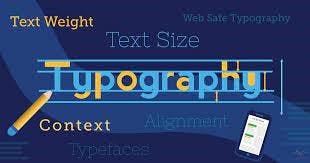
Typography includes type design, modifying type glyphs and arranging type. Type glyphs (characters) are created and modified using illustration techniques. Type arrangement is the selection of typefaces, point size, tracking (the space between all characters used), kerning (the space between two specific characters) and leading (line spacing). Typography is performed by typesetters, compositors, typographers, graphic artists, art directors, and clerical workers. Until the digital age, typography was a specialized occupation. Certain fonts communicate or resemble stereotypical notions. For example, the 1942 Report is a font which types text akin to a typewriter or a vintage report.
Page layout
Page layout deals with the arrangement of elements (content) on a page, such as an image placement, text layout and style. Page design has always been a consideration in printed material and has more recently extended to displays such as web pages. Elements typically consist of type (text), images (pictures), and (with print media) occasionally place-holder graphics such as a decline for elements that are not printed with ink such as die/laser cutting, foil stamping or blind embossing
Tools you need to come up with designs
From the mid-1980s desktop publishing and graphic art software applications introduced computer image manipulation and creation capabilities that had previously been manually executed. Computers enabled designers to see the effects of layout or typographic changes instantly and to simulate the effects of traditional media. Traditional tools such as pencils can be useful even when computers are used for finalization; a designer or art director may sketch numerous concepts as part of the creative process. Styluses can be used with tablet computers to capture hand drawings digitally.
Computers and software
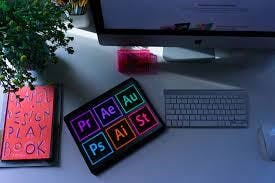
While carrying out your day-to-day tasks as a graphic designer, you will certainly need enough digital tools to come up with that epic well-designed product. The problem is you don’t know which is which, what tool will suit you.
From my own experience, each tool serves a given purpose. For example, let’s have a look at Adobe Photoshop.
Launched in 1988, Adobe Photoshop has become a staple in the life of designers. As a program, adobe Photoshop takes your artistic style into a digital world, with confidence this a program that compliments your artistic style. For Graphic designers, it has countless options, tools, and settings to open up new opportunities, to create a design that is more authentic with proper guidance.
There is also Adobe Illustrator, which is widely known to offer a platform where a designer creates icons, logos and sketches.
We cannot finish listing the tools you need for coming up with any given design but you could look at the following tools; Proofing tool, Filestage, PicsArt, Desygner, DesignBold, Fotor an Online edit images & design poster, invitation, Mockplus, is a free online collaborative prototyping tool, Pixelate which is an Image editor among many more.
Top Graphic Designers you can look up.
While I was beginning my journey in graphic design, I was a bit stranded. In this field, I came to understand that to be a better designer, it is highly advisable to be consistent and up to date with the other designers who are ahead of you. This is by copying design trends. Why? This enhances your design methodologies and creates a large playing field to improve your skills. The given designers will help you; improve your skill set:
Paula Scherr
She’s a titan of postmodern design and responsible for some of the most recognizable branding identities today. Furthermore, Paula Scherr believes that iconic brands as well as local arts organizations deserve dignified design. She rejects modern design rules that prioritize neutral and clean lines. Her beautiful typography expresses the exuberant spirit and powerful presence. Finally, she has been a principal at the heavyweight design agency Pentagram since 1991
Rob Janoff
Rob Janoff has worked at top advertising firms for the past 30 years. Perhaps his most iconic design is the Apple logo. The colourful stripes of the original logo highlighted the computer’s colour interface. The bite added a quirky personality. Moreover, the aesthetic aligned with Steve Jobs’ hippy style. This linked the brand to creative genius. Finally, if you have a computer named after a piece of fruit, wouldn’t you want the logo to be that piece of fruit? Rob Janoff shows us that the greatest designs don’t have to be complicated, as long as it embodies the right values.
Susan Kare
Susan Kare designed the first interface elements and typefaces for the Apple MacIntosh computer. An early pioneer of pixel art, she created the world’s first proportionally spaced digital font family- Chicago and Monaco. Furthermore, she is highly regarded as a technologist. She brought art and personality to computers. For example, she solved the problem of the jagged typefaces by using horizontal, vertical and 45-degree lines.
Paul Rand
Graphic designers know the importance of logos and branding to a company’s success. Paul Rand believed that the best logos should be created with the utmost simplicity and restraint. His best-known works are logos for clients such as IBM, UPS and Enron. Furthermore, his work blended modern design principles with tradition. It was a perfect reflection of a world on the move.
In Kenya, I’ll highly advise you to look up Elvis Kent. He is an award-winning graphic designer, a music producer and a photographer. He has used his skills to help start-ups and established brands to make an impact.
Conclusion
There is too much talk about graphic designing for you as a beginner. Even at the beginning of this vast jungle, there is still much ground to cover. As you move from being a beginner to a great designer, you must always ensure you have a good foundation. Where, you have people you are consistently following, a good set of tools and a disciplined positive mindset. Look, there is nothing you can’t accomplish when you have you have put your mind to it. I will promise you tough moments these ones, are hard to run away from, my advice; It is okay to want to be the best from the word go, it means you have big dreams. Though that’s great, you also need to be gentle with yourself and understand that in learning you must make mistakes.
References
https://en.wikipedia.org/wiki/Graphic_design#cite_note-37
dotyeti.com/blog/2022-most-famous-graphic-d..
Introduction to graphic designing, A Guide to thinking, process and style by Aaris Sherin

